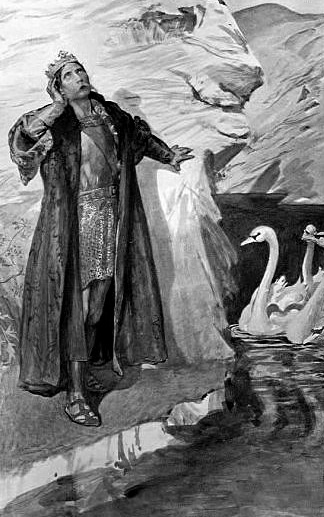
The Swan, which is called "Eala" in Scots Gaelic, "Eala" in Irish, "Alarch" in Welsh, "Alarc’h" in Breton, "Olla" in Manx and "Alargh" Cornish, is known for its majestic grace and gliding mystical beauty. Little wonder then that these birds of the family Anatidae within the genus Cygnus are associated with the gods and goddesses of the pre-Christian Celtic peoples. They are seen as having links to the Otherworld (Aos Si) community whose world was reached through mists, hills, lakes, ponds, wetland areas, caves, ancient burial sites, cairns and mounds. Within these realms dwelt the Celtic gods with all of their supernatural ability. Association with these deities gave the swan an exalted status linked to the Celtic festivals such as those of Beltane and Samhain.
Swan species are: Whooper, Trumpeter, Tundra, Mute, Black-necked, Black, and Berwick. A male swan is called a cob; a female is a pen, and the young are called cygnets. The Northern Hemisphere species of swan have a plumage of pure white. The Southern Hemisphere species are mixed black and white. The Australian black swan is black except for the white flight feathers on its wings. However, the white Mute Swan was also introduced to Australia and New Zealand. The South American black-necked swan has a white body with a black neck. Largest of the waterfowl family Anatidae, the swan is one of the biggest of the flying birds. The larger of the species, including the mute swan, trumpeter swan, and whooper swan, can be over 59 in (1.5 m) with a weight of over 33 Ib (15 kg). Wingspans can extend to over 10 ft (3.1 m). Swans are noted as usually choosing a mate that lasts for life.